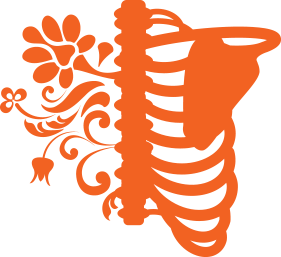
Scoliosis Treatment Education
Grassroots Physical Therapy does not offer The Schroth Method within our clinic, but we are dedicated to educating and empowering every patient who walks through our doors.
We know this can be a scary diagnosis, so we offer the following webinar replay as a resource to help anyone seeking out information about scoliosis diagnosis and treatment options.
You can continue reading below where we’ve answered some commonly asked questions, or watch a replay of the Scoliosis Education Webinar presented by Andrew Merget, DPT, Dipl. MDT, SST.
Scoliosis Education Webinar Replay
Benefits of Scoliosis Treatment with the Schroth Method:
→ Correction of the spinal deformity in three dimensions
→ Reduction or deceleration of the incidence of progression
→ Improvement in the cardio-respiratory dysfunction
→ Reduction of pain
→ Improvement in mobility and postural stability

Frequently asked questions:
What is the Schroth Method?
The Schroth Method is a specialized type of conservative scoliosis treatment for patients of any age, in any stage of treatment. The goal of this method is to develop self-awareness of postural alignment through repetition of specific exercises and breathing techniques. The exercises are unique to each individual’s specific curve pattern, curve severity, and level of function and fitness. The patient will become autonomous and able to continue to improve their quality of life after the sessions have ended.
What age range do you treat with the Schroth Method?
Patients as young as 10, and any adult with curvature patterns over 30 degrees that are currently progressing, have pain, or have post-menopausal changes will benefit from this type of scoliosis treatment. This method is not only for standard scoliosis patterns, but also increased kyphosis (hunched back) that causes pain or progression.
Will this method reverse scoliosis?
Positive changes in scoliosis symptoms depend on the age, severity, and follow-through of the patient. It is possible to correct the spinal deformity in 3D, reduce or decelerate the incidence of progression, improve the cardio-respiratory dysfunction, reduce pain, and improve mobility and postural stability.
Can I prevent scoliosis surgery with this method?
Many cases of scoliosis do not require surgery; however, in severe cases it may not be avoidable. Those patients will still benefit from these techniques by creating greater postural awareness and reducing and/or halting progression ahead of surgery. We also treat postoperative patients on how to move with and maintain their new body alignment.
Will I no longer need to use a scoliosis brace?
This scoliosis treatment can help avoid the use of a brace if implemented at a young age, prior to a 25 degree curvature. Once a brace is already being used, the Schroth Method and physical therapy are complementary. An in-person diagnosis will educate the patient on what is necessary in their specific case.
What will my first appointment be like?
The first visit will focus on education around the patient’s curve type and current posture/pattern that is affecting everyday life. Andrew will clear up any confusion from previous diagnoses and discuss the patient’s treatment goals. Then a treatment plan will be developed considering the 3 areas of scoliosis symptoms: pain, progression, and posture.
What does on going treatment look like?
This will vary for each individual depending on whether they have functional or structural scoliosis. The goal of this type of scoliosis treatment is to become autonomous in these exercises and no longer need continued visits. They will learn a corrected posture through supervised practice moving their body through space and holding this position. They then work to develop this self-awareness in three dimensions, along with a new breathing pattern to create symmetry. With these exercises, we are correcting as much of the postural collapse as possible, in order to decrease the forces that may be contributing to the progression of the curve, pain, and limited lung function.
If the patient is experiencing functional scoliosis, then pain may be corrected in fewer sessions. Treatment will never continue for more sessions than it takes to achieve the patient’s goals.

